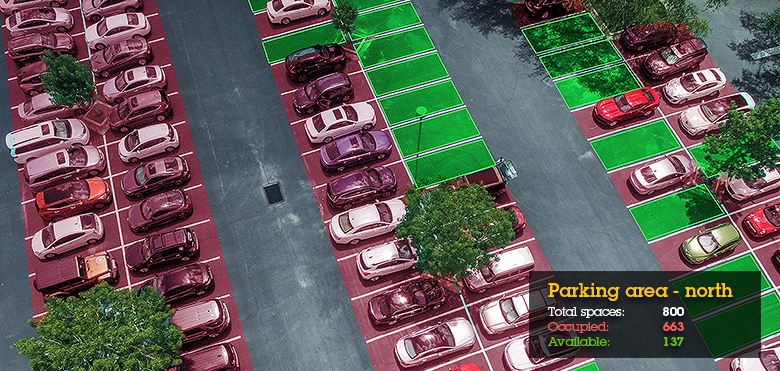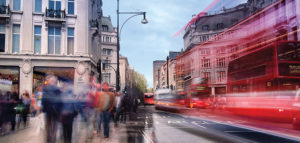Why parking management supports a safe and livable city
Everyone who has visited or lived in a large town or city understands the struggle when arriving by car. Each day, people spend a lot of time on the road looking for parking slots, which is valuable time lost from work, family, and life. Finding a parking space ahead of an important meeting, or with a hungry or tired child can be a stressful situation. Frustrated and stressed drivers are often consequences of poor parking management, and it can be far more serious. It’s something that cities definitely need to address.
There’s been a steady growth of population in urban areas over the past decade and that’s not changing. On the contrary, it’s expected that by 2050 the urban share of the world population will grow to more than 6.4 billion. As a consequence, there has also been a growing number of cars in more compressed cities: a combination that negatively impacts city parking.
In smart cities, multiple systems and data silos can be connected to improve the overall accessibility in a city and to use parking resources more efficiently. Enhancing the management of parking also doesn’t necessarily require cities to invest huge sums in completely new technology: existing surveillance technology can be employed to tackle parking issues and improve the situation.
Parking: a seemingly small factor, but with a big impact on livability
Transportation in general is an important factor in the perceived livability of a city, and for those using cars, accessible parking is essential. This is true for permanent residents, visitors and drivers of delivery vehicles. Poor parking management results in stress, inefficiencies, and a broader impact on traffic congestion as vehicles drive slowly through streets looking for a vacant space. Ultimately, this may mean that people park illegally. Not only is this an inconvenience: if emergency service vehicles are blocked, it can be life-threatening.
There are also negative environmental impacts to poor parking management. Cars moving slowly through streets and delivery drivers leaving engines running while parked illegally, causing additional congestion and traffic incidents all add to issues with pollution, air quality and noise levels.
A recipe for parking-success
The solution to urban parking management comes in the form of video surveillance, analytics and data.
Network surveillance cameras – often those that are already implemented in many cities – can be enhanced through specific analytics applications to both alert officers to parking violations and guide drivers to vacant spaces.
Pre-defined detection zones can trigger automated alerts should an unauthorized vehicle stop in the zone for too long. The alerts are sent to authorities or enforcement agents so they can verify the incident and clear potentially important areas. The cameras not only detect violations but also help to prevent congestion and disruptions.
A combination of surveillance cameras and analytics can be used to identify free parking spaces and when connected with, for example, a navigation app can efficiently guide drivers to them. It saves time, avoids traffic jams and improves the residents’ or visitors’ experience.
Further enhancements come through connected data and systems. For example, in combination with payment apps and license plate recognition, parking management systems could be used to pay parking fees automatically. This would also save time, for example when leaving a parking garage, and make processes smoother for drivers.
With license plate recognition it would also be possible to spot cars without appropriate permits for specific parking zones (given these permits are connected with a certain license plate) or if they park in other restricted spaces. Once detected, an officer can be sent to move the respective vehicle or inform the driver to leave.
Through analysis of real-time and historical data it would also be possible to predict peak-times in certain areas and prepare for it, for instance by opening an extra parking lot or informing drivers in time that there is no parking available and direct to other areas. Adding artificial intelligence to the analysis, parking management solutions can even predict where the chance is highest to find an available parking lot when you arrive. In this way, the distribution of cars could be better controlled ensure drivers don’t arrive at a parking garage only to find out it’s full, again causing frustration and further congestion.
An achievable goal
Effective parking management is essential in increasingly crowded and congested cities. It helps to reduce traffic incidents and parking violations, leads to increased safety and security of citizens, reduces stress and improves the environment: all factors which result in an improved quality of life. And it’s a goal well within reach, with many cities already having much of the infrastructure and technology in place to take advantage.
Please find more information about how Axis contributes to livability in smart cities.




